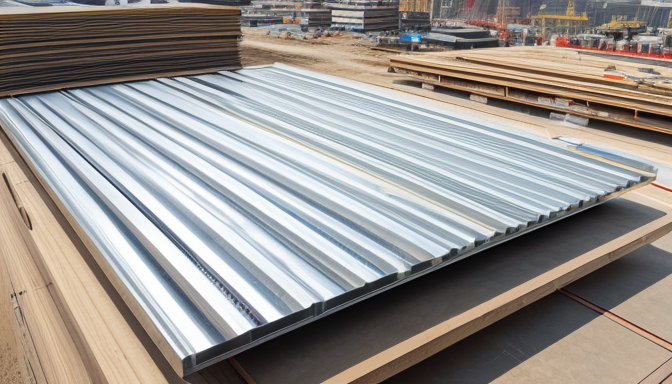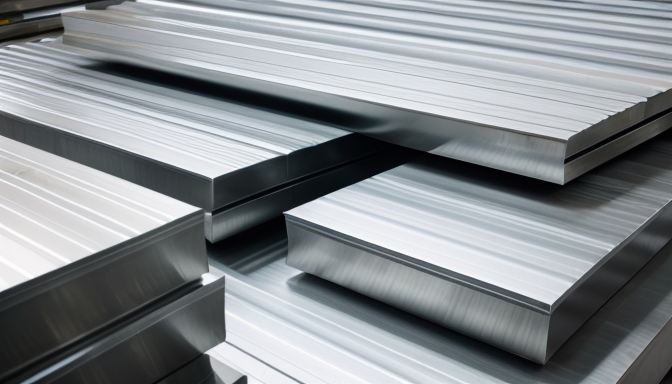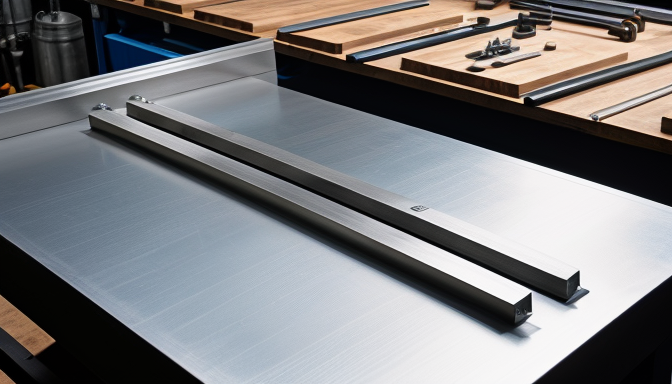When it comes to construction and manufacturing, A633 steel sheets are a popular choice. Why? Because they offer a blend of strength and versatility that few materials can match. Imagine building a structure that can withstand harsh weather conditions and heavy loads. That’s what A633 steel brings to the table!
These steel sheets are primarily used in the construction of bridges, buildings, and other structures that require high strength and durability. They are especially beneficial in environments where the material will face extreme temperatures. So, whether you’re working on a skyscraper or a simple warehouse, A633 steel sheets can be your go-to option.
But what exactly makes A633 steel so special? It’s all about its properties. A633 steel is a high-strength low-alloy steel. This means it has excellent weldability and can be easily shaped into various forms without losing its integrity. Think of it as the superhero of steel—strong enough to handle tough tasks yet flexible enough to adapt to different needs.
In this article, we will explore the essential aspects of A633 steel sheets. We’ll take a closer look at their price, weight, properties, sizes, and applications in various industries. By the end, you’ll have a solid understanding of why A633 steel sheets are a smart choice for your next project.
A633 Steel Sheet Price
Understanding the pricing of A633 steel sheets is essential for anyone involved in construction or manufacturing. Why? Because prices can fluctuate based on a variety of factors. When planning a project, knowing these factors can help you budget effectively. So, what influences the price of A633 steel sheets?
First, let’s talk about market demand. When demand is high, prices tend to rise. Conversely, if there’s a surplus of steel sheets, prices may drop. This is similar to how the price of seasonal fruits changes based on availability. The steel market works in much the same way.
Next, consider the quality of the steel. A633 steel is known for its strength and durability, which can come at a premium. Higher quality often means a higher price tag. But remember, investing in quality can save you money in the long run. Think of it as buying a sturdy pair of shoes. You might spend more upfront, but they last longer and provide better support.
Another factor is supplier pricing strategies. Different suppliers may offer varying prices based on their operational costs, location, and even their target market. It’s wise to shop around. Get quotes from multiple suppliers to find the best deal. This can be compared to looking for the best price on a new gadget; sometimes, a little research goes a long way.
To give you a clearer idea, here’s a simple table showing average price ranges for A633 steel sheets based on thickness:
| Thickness (inches) | Average Price (per ton) |
|---|---|
| 0.25 | $600 – $700 |
| 0.50 | $650 – $750 |
| 0.75 | $700 – $800 |
As you can see, prices vary with thickness. This is crucial for your project planning. The thicker the sheet, the more material you need, which directly affects your budget.
Finally, keep an eye on global market trends. Events like trade policies, tariffs, and international demand can all impact steel prices. For instance, if a major steel-producing country faces sanctions, that could lead to a price spike globally. Staying informed about these trends can help you make better purchasing decisions.
In conclusion, the price of A633 steel sheets is influenced by various factors, including market demand, quality, supplier strategies, and global trends. By understanding these elements, you can navigate the market more effectively and make choices that align with your budget.

A633 Steel Sheet Weight
The weight of A633 steel sheets is a critical factor to consider, especially in construction and manufacturing. Why? Because the weight directly affects transportation costs and structural integrity. Imagine trying to lift a heavy sheet of steel; it’s not just about the muscle power. You need to plan for how much your equipment can handle and how much your project budget allows.
So, how is the weight of A633 steel sheets determined? It largely depends on the dimensions and thickness of the sheets. Typically, A633 steel is available in various thicknesses, ranging from 1/4 inch to 1 inch. The standard weight can be calculated using the formula:
Weight (lbs) Length (inches) x Width (inches) x Thickness (inches) x 490
Let’s break that down. The number 490 is a constant that represents the weight of steel per cubic inch. For instance, if you have a sheet measuring 48 inches by 96 inches with a thickness of 1/2 inch, the weight would be:
| Dimension | Value |
|---|---|
| Length | 48 inches |
| Width | 96 inches |
| Thickness | 0.5 inches |
| Calculated Weight | 1,176 lbs |
As you can see, the weight can add up quickly! This means that when you’re planning your project, you need to consider not just the cost of the material but also how much it weighs. Are you using cranes or other heavy equipment? Make sure they can handle the load. And if you’re working on a tight budget, remember that heavier sheets might increase your shipping costs.
In addition to practical considerations, knowing the weight of A633 steel sheets can help you make informed decisions about how to use them. For example, lighter sheets may be more suitable for projects where mobility is key, while heavier sheets might be ideal for structures requiring enhanced strength and durability.
In conclusion, understanding the weight of A633 steel sheets isn’t just a technical detail; it’s a crucial part of your planning process. By keeping the weight in mind, you can ensure that your project runs smoothly and efficiently. So, next time you’re ordering A633 steel sheets, take a moment to consider their weight and how it fits into your overall project goals.
A633 Steel Sheet Properties
A633 steel sheets are known for their remarkable properties that make them ideal for a variety of applications. These sheets are primarily used in construction and manufacturing due to their strength and durability. So, what exactly makes A633 steel stand out? Let’s dive into its mechanical and chemical properties.
First off, the mechanical properties of A633 steel sheets are impressive. They exhibit high yield strength and tensile strength, which means they can withstand heavy loads without deforming. This is crucial in construction, where structural integrity is non-negotiable. The yield strength can reach up to 50 ksi (kilopounds per square inch), making it suitable for demanding environments.
In addition to strength, A633 steel sheets are also tough. This toughness allows them to absorb energy during impact, making them less likely to fracture. Think of it like a sturdy shield that protects against unexpected hits. This characteristic is particularly valuable in areas prone to harsh weather or seismic activities.
Now, let’s talk about the chemical properties. A633 steel sheets are made primarily of iron, but they also contain alloying elements like manganese, phosphorus, and sulfur. These elements enhance the steel’s performance. For example, manganese improves hardenability, while phosphorus and sulfur can affect machinability. The chemical composition can vary slightly depending on the supplier, so it’s always wise to check the specifications.
Another notable feature of A633 steel is its low-temperature toughness. This property allows it to perform well even in extreme cold. Imagine working on a bridge in the dead of winter; you want materials that won’t fail when temperatures drop. A633 steel sheets are designed to handle those chilly challenges.
To summarize, here are some key properties of A633 steel sheets:
- High Yield Strength: Up to 50 ksi
- Toughness: Excellent impact resistance
- Chemical Composition: Includes manganese, phosphorus, and sulfur
- Low-Temperature Toughness: Performs well in cold conditions
In conclusion, the properties of A633 steel sheets make them a reliable choice for various applications. Their strength, toughness, and ability to withstand harsh conditions are just a few reasons why they are favored in the construction and manufacturing industries. Whether you’re building a bridge or a high-rise, A633 steel sheets can provide the support you need.

A633 Steel Sheet Sizes
When it comes to A633 steel sheets, size matters. The dimensions of these sheets can significantly impact their usability in various projects. Whether you’re working on a construction site or in a manufacturing facility, knowing the sizes available can save you time and money. But what sizes are we talking about? Well, A633 steel sheets typically come in a variety of dimensions to suit different needs.
Most suppliers offer A633 steel sheets in thicknesses ranging from 1/8 inch to 1 inch. The width can vary, but a common range is between 48 inches to 120 inches. Lengths usually extend from 96 inches to 480 inches. This variety allows for flexibility in design and application, making it easier to find the right fit for your project.
Now, let’s break it down a bit more. Here’s a quick overview of the common sizes:
| Thickness (inches) | Width (inches) | Length (inches) |
|---|---|---|
| 1/8 | 48 | 96 |
| 1/4 | 60 | 120 |
| 1/2 | 72 | 240 |
| 1 | 120 | 480 |
These sizes are quite standard, but remember, different suppliers might offer variations. Always check with your supplier for the exact sizes they have available. This is crucial because the size of the steel sheets can affect not just the cost, but also the overall design of your project. For instance, if you need a large piece for a structural component, you might want to go for a larger sheet to minimize seams and joints.
Another important factor to consider is that larger sheets can be more challenging to handle. So, if you’re working with a smaller crew or limited equipment, it might be wise to choose smaller sizes. It’s all about finding the right balance between size and manageability.
In conclusion, understanding the sizes of A633 steel sheets is essential for any construction or manufacturing project. The right size can make all the difference in terms of cost, efficiency, and structural integrity. So, make sure to do your homework and choose wisely!
Frequently Asked Questions
- What is A633 steel sheet used for?
A633 steel sheets are primarily used in construction and manufacturing. Their unique properties make them ideal for applications requiring strength and durability, such as bridges, buildings, and heavy machinery.
- How is the price of A633 steel sheets determined?
The price of A633 steel sheets can fluctuate based on various factors, including market demand, production costs, and supplier pricing strategies. Keeping an eye on market trends can help you budget effectively for your projects.
- What are the typical weights of A633 steel sheets?
The weight of A633 steel sheets varies depending on their thickness and dimensions. Generally, heavier sheets are more suitable for structural applications, while lighter sheets may be used in less demanding environments.
- What are the mechanical properties of A633 steel?
A633 steel is known for its high yield strength and good toughness, making it suitable for low-temperature applications. Its mechanical properties ensure it can withstand significant stress without deforming.
- Are A633 steel sheets available in different sizes?
Yes, A633 steel sheets come in various sizes based on supplier specifications. Common dimensions include thickness, width, and length, allowing for flexibility in their use across different projects.
- Can A633 steel sheets be welded?
Absolutely! A633 steel sheets are designed to be easily welded, which enhances their usability in construction and manufacturing. Proper welding techniques ensure structural integrity and performance.
- How can I find a reliable supplier for A633 steel sheets?
To find a trustworthy supplier, consider researching online reviews, asking for recommendations from industry peers, and comparing quotes from multiple suppliers to ensure you get the best quality and price.
